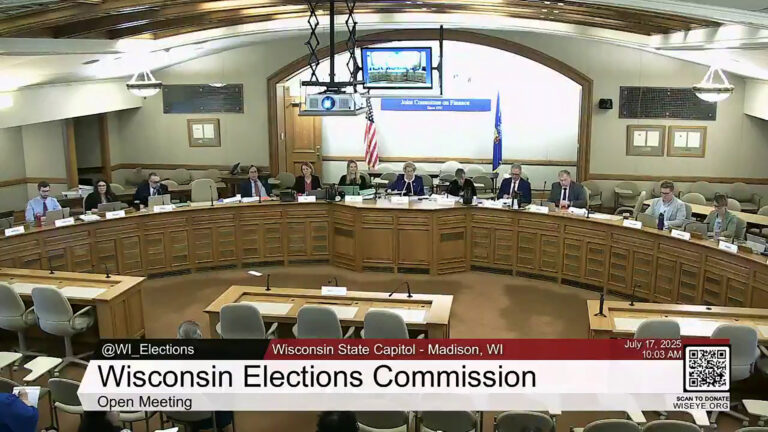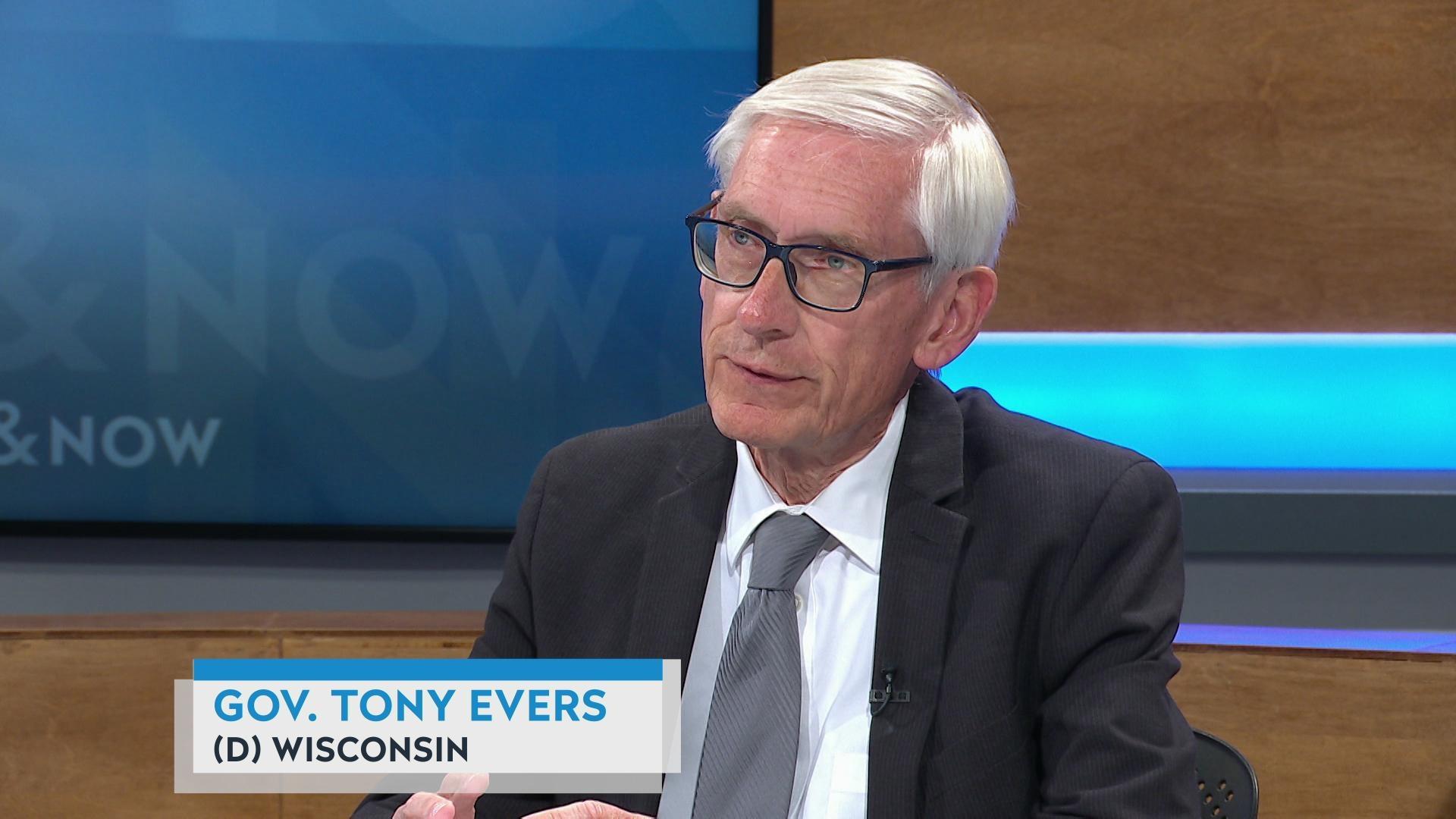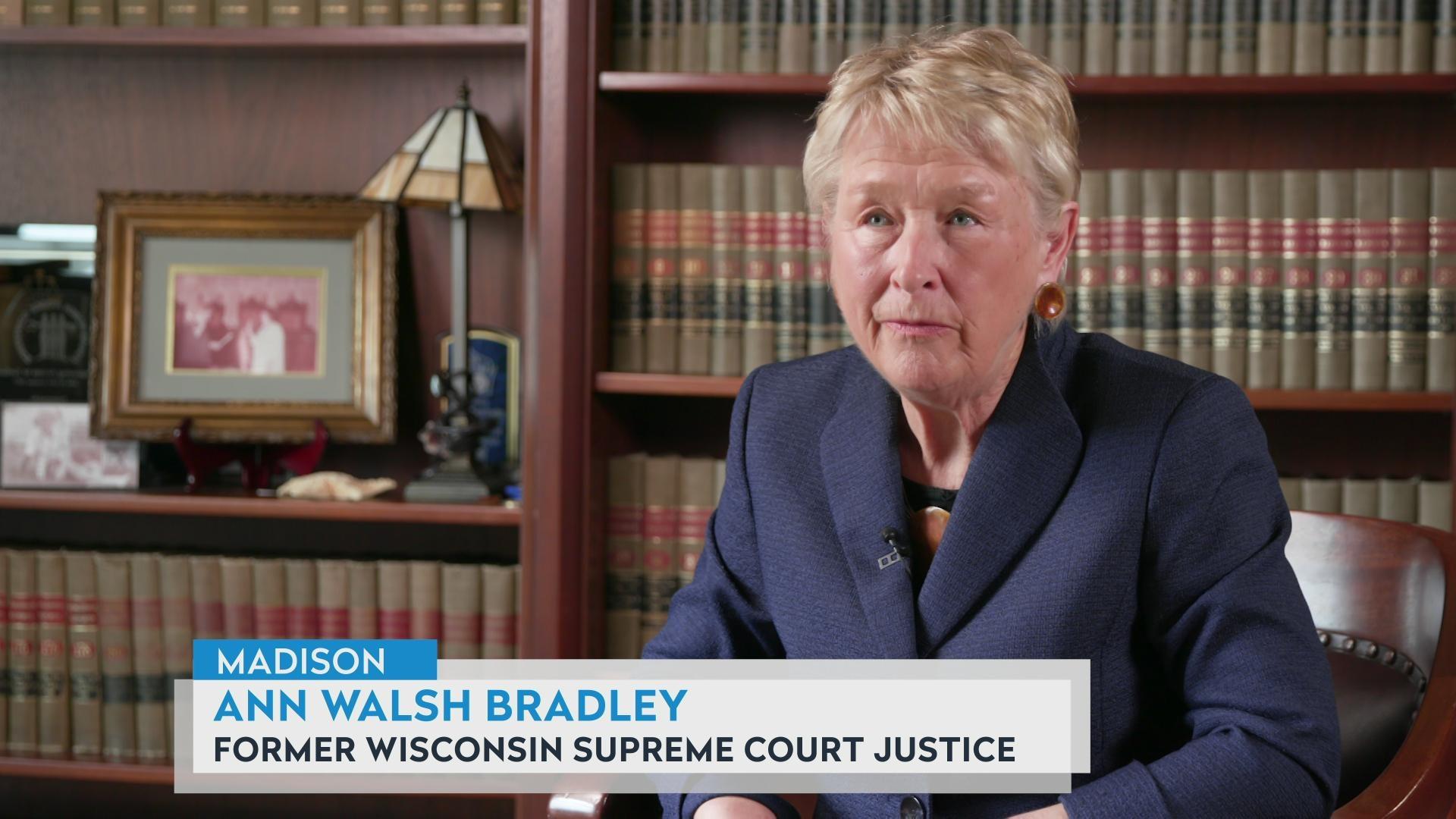Supreme Court Hears 'Safer at Home' Challenge
By Zac Schultz
May 5, 2020

Wisconsin Supreme Court. (Courtesy: Shamane Mills / WPR)
The state Supreme Court met virtually Tuesday to hear the lawsuit filed by the Republican-controlled Legislature against Department of Health Services Secretary-Designee Andrea Palm, alleging she and the governor overstepped their authority by issuing the state’s “Safer at Home” order without legislative input.
Is the “Safer at Home” order like the internment of the Japanese in World War II? If the court strikes down the “Safer at Home” order will COVID-19 spread like wildfire in Wisconsin? Is it the very definition of tyranny to close down nonessential businesses during the pandemic?
These are some of the questions the justices on the Wisconsin Supreme Court asked during oral arguments Tuesday.
Conservative Justice Rebecca Bradley was quiet for the first half of the arguments while the attorney for the Republicans made his case. But when Assistant Attorney General Colin Roth prepared to defend the state, she interrupted him during his second sentence.
“Where in the constitution did the people of Wisconsin confer authority on a single, unelected, cabinet secretary to compel almost six million people to stay at home and close their businesses and face imprisonment if they don’t comply, with no input from the Legislature, without the consent of the people,” she said. “Isn’t it the very definition of tyranny for one person to order people to be imprisoned for going to work?”
State laws dating back to the 1880’s and updated in the 1980’s clearly give the DHS secretary the power to issue orders to prevent the spread of infectious disease during a pandemic. That is the power Palm used when she issued Order 28, which extended Gov. Tony Evers’ “Safer at Home” order through May 26. The first “Safer at Home” order was issued under the governor’s health emergency powers, which expire on May 11.
The GOP-led Legislature sued, saying the DHS order is actually a rule, and thus should fall under the emergency rule making process, where the Legislature has oversight and veto power.
Ryan Walsh, the attorney for the GOP, said the emergency rule process in this case would take about 12 days, which is actually faster than most emergency rule timelines. Walsh says DHS could close schools or even counties under their powers, but not entire sections of the state.
Roth pointed to the recent COVID-19 outbreak in Brown County as an example where that process is not nimble enough to respond.
“The cases in Brown County in the span of two weeks surged over 10-fold, from 60 to almost 800 and that’s two weeks that would be required for emergency rulemaking,” he said.
A number of conservative members of the Supreme Court focused on the limits to the DHS secretary’s powers. Justice Rebecca Bradley pointed to a tragic point in U.S. history, “where the [U.S. Supreme] Court said the need for action was great and time was short and that justified assembling together and placing under guard all those of Japanese ancestry in assembly centers during World War II.”
“Could the secretary, under this broad delegation of legislative-like power, order people out of their homes into centers where they are properly socially distanced in order to combat the pandemic?” she asked.
Bradley also asked if DHS could issue similar orders each flu season, since that was an infectious disease. Roth said the answer was “no” for both internment camps and the flu.
The irony of the Supreme Court hearing a case that would end the “Safer at Home” order through video conference was not lost on most observers. Conservative Justice Annette Ziegler even seemed sympathetic to the concept of “Safer at Home.”
“You know what, it makes sense. So as a policy determination, the court should just say ok, it’s ok in this situation because it makes sense,” she said. “Part of the problem we have is we may personally think things make sense, but we have to apply constitutional principles and the language of the statute and the law to figure out whether or not it does make sense.”
Roth seemed to sense the conservative majority was not receptive to his arguments, and as he closed he made a plea:
“You’ve got to look very closely and not issue a decision that’s too broad. People will die if this order is enjoined with nothing to replace it. That is exactly what will happen.”
 Passport
Passport











Follow Us